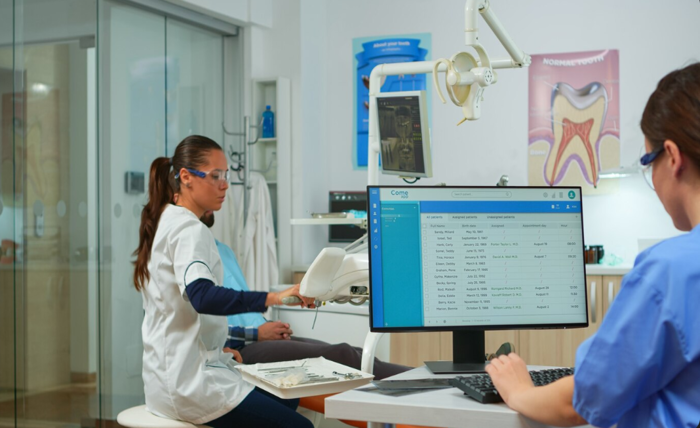In the fast-paced world of orthodontics, efficiency and precision are crucial. Behind every successful orthodontic practice is a well-organized laboratory that delivers high-quality appliances and models quickly and accurately. As technology advances and patient expectations rise, orthodontic labs must streamline their workflows to remain competitive. Fortunately, there are several tools and strategies that can help labs boost productivity, minimize errors, and maintain consistent quality.
1. Embrace Digital Dentistry
One of the most significant transformations in orthodontic labs is the shift from traditional impressions to digital workflows. Intraoral scanners have revolutionized how data is collected, reducing the need for physical impressions and increasing accuracy.
Benefits of Digital Scanning:
- Eliminates shipping delays and physical storage needs.
- Offers more precise impressions with fewer remakes.
- Allows real-time communication between clinicians and lab technicians.
Once scanned, files can be immediately sent to the lab, where technicians can begin designing appliances using CAD (Computer-Aided Design) software. This digital approach shortens turnaround times and enables better collaboration between orthodontists and labs.
2. Leverage Lab Management Software
Keeping track of cases, managing orders, and ensuring timely delivery can quickly become overwhelming without a structured system in place. That’s where orthodontic computer software comes into play. Modern lab management platforms offer comprehensive, end-to-end workflow solutions designed specifically for orthodontic labs.
Key features to look for:
- Case tracking and status updates.
- Automated reminders and deadlines.
- Integrated communication between clinicians and lab teams.
- Inventory management and billing systems.
Using such tools not only saves time but also reduces the risk of errors and delays.
3. Standardize Processes
Consistency is key to maintaining high-quality output. Standardized workflows help ensure that every technician follows the same steps, reducing variability and increasing efficiency.
Tips for standardization:
- Create step-by-step guides for each type of appliance.
- Train all staff on best practices and updates to protocols.
- Hold regular quality control meetings to review cases and identify areas for improvement.
By establishing clear procedures, your lab can reduce rework and maintain a consistent standard of care.
4. Automate Where Possible
Automation doesn’t replace skilled technicians—it enhances their capabilities. Tools like 3D printers and robotic trimming machines help produce appliances more quickly and with greater accuracy.
Popular lab automation tools:
- 3D Printers – Ideal for printing models, retainers, and aligners.
- Milling Machines – Used for custom bracket production and other appliances.
- Laser Welders – Provide fast, precise metal framework assembly.
Incorporating automation can significantly speed up production and reduce manual errors.
5. Improve Team Communication
Efficient workflows rely on clear, timely communication. Miscommunication between the orthodontist and lab technician can lead to costly errors and delays.
Best practices:
- Use secure digital platforms to share notes, images, and updates.
- Schedule regular check-ins between clinicians and lab managers.
- Encourage technicians to ask clarifying questions when necessary.
Establishing a strong feedback loop ensures that every case is handled with precision and understanding.
6. Prioritize Continuing Education
As new technologies and techniques emerge, staying up to date is essential. Investing in continuing education for your team not only improves skill levels but also boosts morale and innovation.
Ways to stay updated:
- Attend dental lab trade shows and workshops.
- Subscribe to orthodontic journals and industry newsletters.
- Host in-house training sessions or webinars with equipment vendors.
Keeping your team informed empowers them to implement best practices and embrace change.
7. Monitor and Analyze Key Metrics
To truly optimize your lab’s performance, you need to measure it. Tracking key performance indicators (KPIs) can help you identify bottlenecks, forecast demand, and allocate resources more effectively.
Important KPIs to track:
- Turnaround time for different case types.
- Rate of remakes or adjustments.
- Technician productivity.
- Customer satisfaction scores.
Regularly reviewing this data allows you to make informed decisions and continuously improve lab efficiency.
Final Thoughts
Optimizing an orthodontic lab isn’t about working faster—it’s about working smarter. By embracing digital tools, standardizing workflows, improving communication, and investing in automation and education, orthodontic labs can increase productivity and deliver consistently excellent results. In an industry where precision and timing are everything, streamlined workflows are not just a luxury—they’re a necessity.
Whether you’re running a small in-house lab or managing a larger external facility, these tools and tips provide a strong foundation for long-term success. As orthodontics continues to evolve, a forward-thinking, well-organized lab will remain a critical part of patient satisfaction and clinical excellence.







